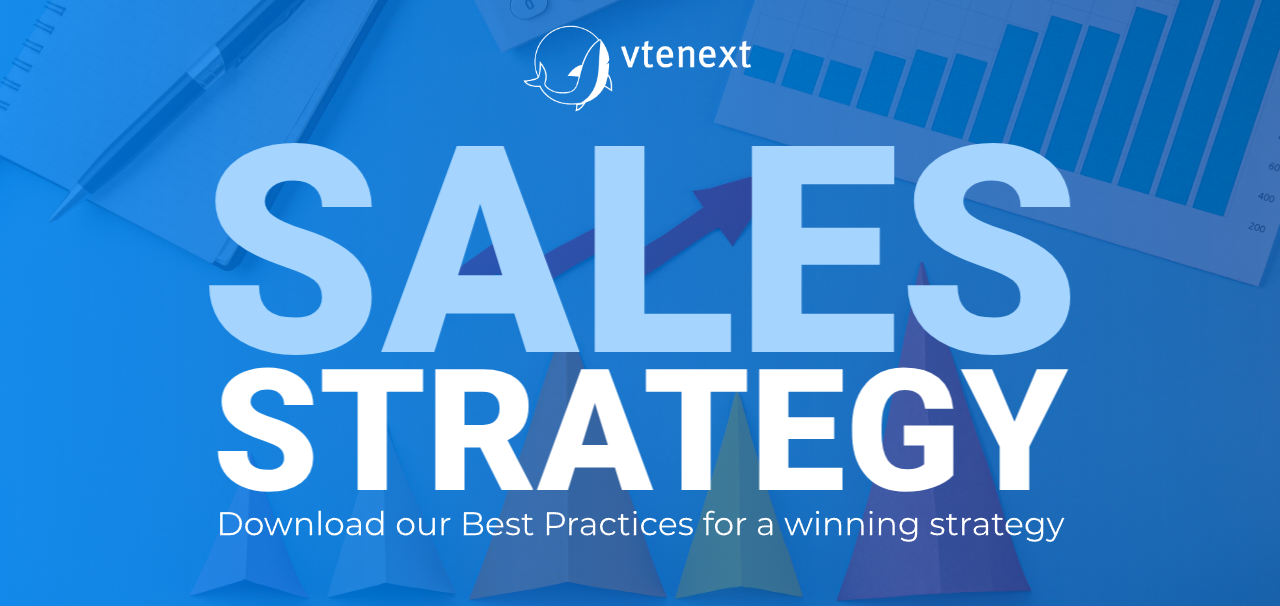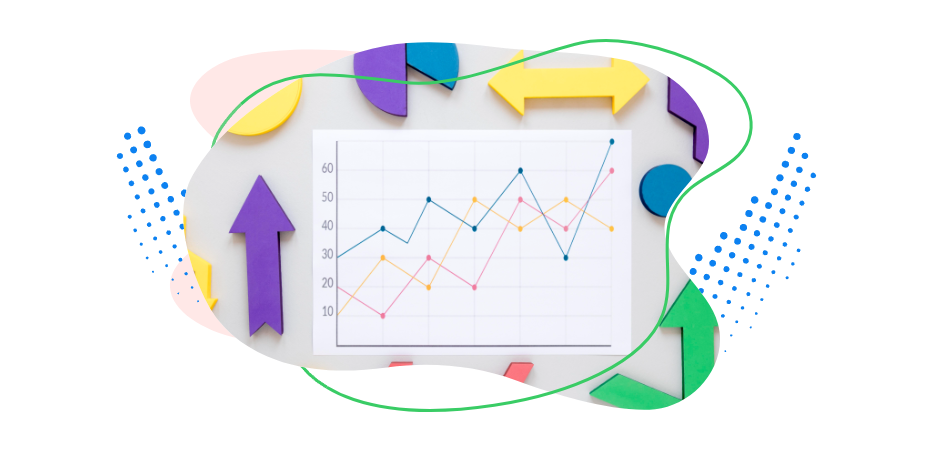Promoting a product or service is not always enough to achieve success: an effective sales strategy is needed to help you understand your audience and build a lasting relationship. This allows you to predict every phase of the process and to clearly communicate your goals to your team.
This guide is designed to show you how to improve your sales strategy by adopting the most appropriate approach to achieve excellent results.
What is a sales strategy
A sales strategy is basically a detailed guide that helps sales teams understand how to present products or services and find new customers. It’s not just about selling, but about having clear goals, how to position the product, and how to organize the team. In short, a good plan tells you exactly what to do to sell better and reach the targets.
Let’s think about the ingredients you put in: clear objectives, the so-called KPIs, the sales process from start to finish, who does what in the team, and then the market information and the profile of the typical customer. You also need to know how to position your product well, how to engage customers, understand their purchasing journey, and have an idea of what the competition is doing.
In essence, your sales plan needs to cover everything you need to find and acquire new customers and to achieve your goals. Without a good strategy, it’s like going into a battle without a plan: you may have some success here and there, but you will hardly be able to achieve great goals. So, take the time to put everything in writing and make sure your team knows exactly what to do.
Why it’s important to have one
Having a well-defined plan is essential to give your sales team clear goals and precise guidance. Think of it as a long-term project for the future, with a detailed roadmap that tells you how to achieve sales results and prevent potential problems along the way.
It helps you clarify your market position, identify the ideal type of customers, and understand how to target these customers directly. And since the sales strategy is specific to your company, it also allows you to differentiate yourself from your competitors.
The plan must be a document with practical guidelines to use for operating in the most appropriate manner.
A well-developed sales strategy can indeed make the difference in improving your team’s performance, with each member who can be made responsible through the assignment of concrete tasks; communication and collaboration improve, along with precise resource allocation and budget definition.
Not only does communication within the company improve, but also communication with the outside, since a good plan can help you be consistent with your messaging and branding activities; it also helps you achieve more precise targeting and obtain higher conversion rates, providing you with a clearer understanding of who your true customers are in order to increase retention rates as well.
Finally, a good strategy allows you to predict sales trends with greater accuracy, making the path to success much clearer and more manageable.
What types of sales strategy exist
It is essential to understand that there is not just one sales strategy: there are many, and they can be combined according to the specific context.
Generally, the first distinction is between Inbound and Outbound strategies: the former aim to attract customers, prompting them to request products or services directly from the company; on the contrary, the latter are designed to achieve the best results when the company contacts the consumer. In short, with Inbound strategies, it is the customer who comes to us, while with Outbound strategies, we are the ones who go to our target.
Among Inbound strategies there are all those related to promotional activities such as Content Marketing, Social Media Marketing, or Search Engine Optimization (SEO). Outbound includes more traditional forms and involves activities such as Cold Calling, Telemarketing, but also advertising in print or other media, in addition to forms of online Advertising.
Other more sophisticated strategies, designed to respond to more specific contexts, can be mentioned.
Some of the most important are:
Value-Based Selling
The core of Value-Based Selling is the building of trust with customers, which leads to better relationships and greater loyalty, and works particularly well when customers are looking for the maximum value from the offered solution, rather than focusing only on product features or price. Salespeople put themselves in the customers’ shoes, trying to understand their specific needs and the problems they face, and then propose the most suitable solution. Essentially, they focus on the benefits of the products or services to create value and offer the best solutions to customers.
Account-Based Selling
Account-Based Selling (ABS) is used in B2B to target high-value customers: customers that align with the ideal profile are chosen, thorough research is conducted, and then a team of sales, marketing, and customer service creates customized offers. This method builds strong relationships and increases the chances of closing large deals.
Challenger Selling
Challenger Selling is when salespeople challenge and educate customers, first understanding their business and then proposing new ideas and solutions: they take control of the conversations, pushing customers out of their comfort zone. It is common in B2B and makes salespeople trusted consultants.
Consultative Selling
Just like Value-Based Selling, Consultative Selling focuses on the specific needs of the customer. Here, however, the seller has a deep knowledge of the sector and acts as a consultant: he offers expert advice, asking targeted questions to better understand the needs. The main goal is to build long-term relationships, often more important than immediate sales.
Solution selling
Understanding the customer’s problems is essential in Solution Selling: this approach does not promote a specific product, but suggests the one that best meets the customer’s needs. It works great when customers have unique needs, allowing for the offer of customized products or solutions.
How to build a sales strategy
As we have already mentioned, each context deserves a strategy and, therefore, a specific planning. However, there are some steps that cannot be overlooked.
First of all, establish your goals: what do you want to achieve? Maybe you want to increase sales by a certain percentage, enter a new market, or gain a specific number of new customers.
After that, understand who your audience is by researching your target audience: design your buyer persona by defining every characteristic, such as age, level of education, current location, income level, and purchasing behaviors. This way, you will be able to better orient your strategies.
Another crucial step is to analyze your competition to understand who your main rivals are and what their strengths (and weaknesses) are. With this information, you can figure out ways to surpass them. Then decide which sales channels to use; consider which methods might work best for your business, whether online, physical stores, events, or whatever.
A delicate phase is the setting of prices: in this case, you have to take into account production costs, the competitors’ proposals, and how much your audience is willing to pay. Also consider any discounts, packages, or promotions you might offer.
Below, you can think about developing an effective sales message that clearly communicates the benefits of your product or service and why it is better or different from others on the market: determine which sales tools you will use and which software or tools will give you the best return on investment.
The sales team needs to be trained, providing them with the knowledge and resources necessary to sell the product or service effectively, also defining the sales methodology that will be used, in order to have a uniform and measurable approach.
Finally, set a budget: decide how much you want to allocate to each component of the sales process, such as tools, training, promotions, and other expenses.
Create a sales strategy with vtenext
CRM systems have improved the way of designing sales strategies, as mentioned in our article on what a CRM is. With the vtenext CRM, companies can finally manage, analyze and organize interactions with current and potential customers much more efficiently: this not only improves the customer experience, increasing satisfaction and loyalty, but also personalizes the sales approach according to the specific needs of each customer, providing tailor-made solutions.
Among the advantages of CRM there is its ability to give accurate sales forecasts and detailed analyses: with vtenext, you can track sales metrics in real time and use the collected data to make reliable forecasts; its reporting and analytics capabilities help identify trends, strengths and areas where you can improve, allowing you to make much more informed and strategic decisions.
vtenext automates lead acquisition, tracking and nurturing; thanks to features such as lead scoring and behavior tracking, It’s easier to identify and cultivate high quality leads. It also integrates with your marketing strategies, enabling targeted and customer-based campaigns, thus improving the conversion rate and ROI of the campaigns.
It is possible to save all customer information in one place, allowing the team to quickly access essential data such as contact details and purchase history. This makes each interaction more personalized and improves customer satisfaction, building long-lasting relationships.
Finally, another great advantage of vtenext is to potentiate communication and collaboration within the team, thanks to features such as document sharing and task management: it automates many sales activities, reducing manual work and freeing up resources for more value-adding activities such as building customer relationships.


